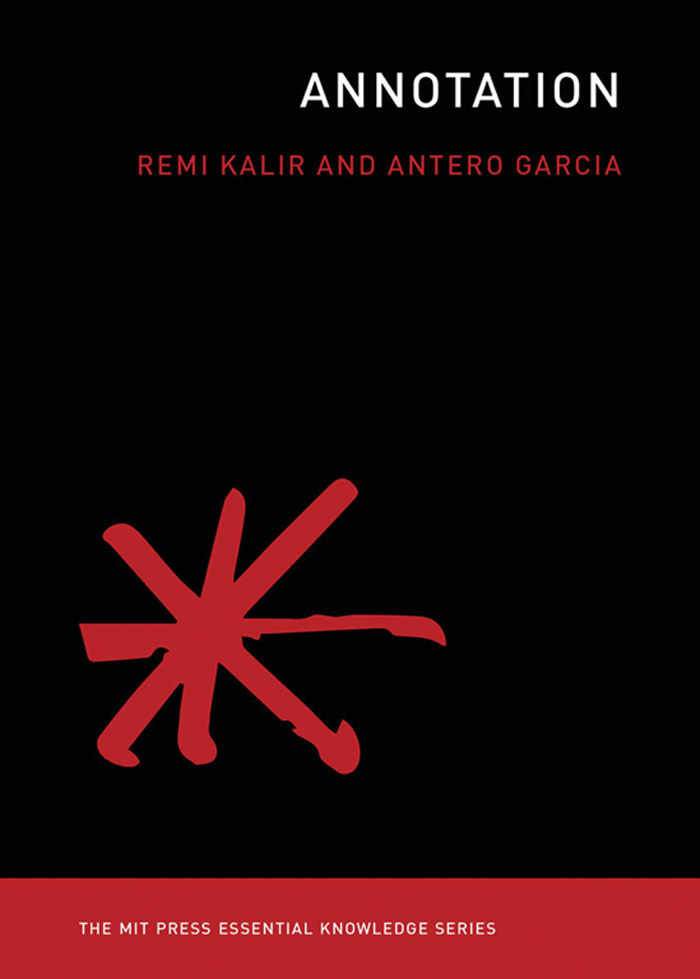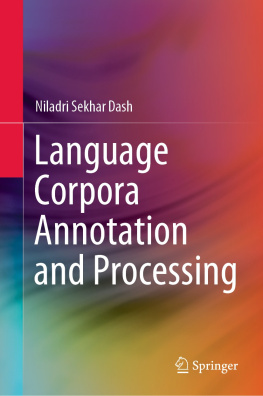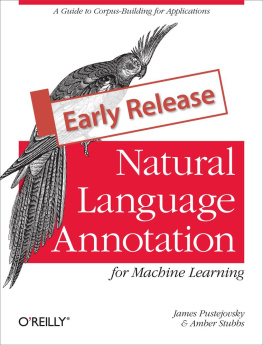Remi Kalir - Annotation
Here you can read online Remi Kalir - Annotation full text of the book (entire story) in english for free. Download pdf and epub, get meaning, cover and reviews about this ebook. year: 2021, genre: Children. Description of the work, (preface) as well as reviews are available. Best literature library LitArk.com created for fans of good reading and offers a wide selection of genres:
Romance novel
Science fiction
Adventure
Detective
Science
History
Home and family
Prose
Art
Politics
Computer
Non-fiction
Religion
Business
Children
Humor
Choose a favorite category and find really read worthwhile books. Enjoy immersion in the world of imagination, feel the emotions of the characters or learn something new for yourself, make an fascinating discovery.

- Book:Annotation
- Author:
- Genre:
- Year:2021
- Rating:4 / 5
- Favourites:Add to favourites
- Your mark:
- 80
- 1
- 2
- 3
- 4
- 5
Annotation: summary, description and annotation
We offer to read an annotation, description, summary or preface (depends on what the author of the book "Annotation" wrote himself). If you haven't found the necessary information about the book — write in the comments, we will try to find it.
Annotation — read online for free the complete book (whole text) full work
Below is the text of the book, divided by pages. System saving the place of the last page read, allows you to conveniently read the book "Annotation" online for free, without having to search again every time where you left off. Put a bookmark, and you can go to the page where you finished reading at any time.
Font size:
Interval:
Bookmark:

The MIT Press Essential Knowledge Series
A complete list of the titles in this series appears at the back of this book.
Remi Kalir and Antero Garcia
The MIT Press | Cambridge, Massachusetts | London, England
2021 Massachusetts Institute of Technology
All rights reserved. No part of this book may be reproduced in any form by any electronic or mechanical means (including photocopying, recording, or information storage and retrieval) without permission in writing from the publisher.
This book was set in Chaparral Pro by New Best-set Typesetters Ltd.
Library of Congress Cataloging-in-Publication Data
Names: Kalir, Remi, author. | Garcia, Antero, author.
Title: Annotation / Remi Kalir and Antero Garcia.
Description: Cambridge, Massachusetts : The MIT Press, [2021] | Series: The MIT Press essential knowledge series | Includes bibliographical references and index.
Identifiers: LCCN 2020007617 | ISBN 9780262539920 (paperback)
Subjects: LCSH: Annotating, book.
Classification: LCC Z693.3.A55 K35 2021 | DDC 025.3dc23
LC record available at https://lccn.loc.gov/2020007617
10 9 8 7 6 5 4 3 2 1
d_r0
For Thaddeus
R. K.
For Joey and Stella
A. G.
The MIT Press Essential Knowledge series offers accessible, concise, beautifully produced pocket-size books on topics of current interest. Written by leading thinkers, the books in this series deliver expert overviews of subjects that range from the cultural and the historical to the scientific and the technical.
In todays era of instant information gratification, we have ready access to opinions, rationalizations, and superficial descriptions. Much harder to come by is the foundational knowledge that informs a principled understanding of the world. Essential Knowledge books fill that need. Synthesizing specialized subject matter for nonspecialists and engaging critical topics through fundamentals, each of these compact volumes offers readers a point of access to complex ideas.
Around the time that we started writing this book, in early 2019, author and educator Clint Smith tweeted, I really enjoy buying used books because you get some small insight into how someone else experienced that book before you. Every highlighted sentence, underlined passage, circled word, & dog-eared page is like being part of a book club with a stranger youll never meet.
Reading Smiths tweet, were reminded of another writerEdgar Allan Poewho penned an essay 175 years ago in which he recalled a rainy afternoon reading annotated books in his personal library: The picturesqueness of the numerous pencil-scratches arrested my attention, their helter-skelter-iness of commentary amused me. I found myself at length, forming a wish that it had been some other hand than my own which had so bedevilled the books, and fancying that, in such case, I might have derived no inconsiderable pleasure from turning them over.
Maybe youve purchased Annotation new or used. Maybe youve borrowed this book from a library or friend. Whether youre holding a bound book and reading this as a printed text, or holding a device and reading a digital text, its pretty likely that sooner or later, youll either come across or author an annotation. And when that happens, perhaps youll recall Smith and Poes commentaries about the form, social function, and affective power of annotation. Join the book club. Read annotation. Derive some pleasure.
Annotation, as well examine, is many things to many people, many texts, and many periods of time. Annotation is a way that readers talk with their texts, to their texts, about and beyond texts, and within and through texts. Annotation connects together people, texts, and ideas, enabling shared insight, engaged dialogue, and new understanding and knowledge.
Annotation, as we define and discuss, is the addition of a note to a text.
You probably read annotation every day. You may also write, draw, or create annotation. Not sure? Consider these examples.
Check out a book from the library or purchase a used book, and gain access to the private thoughts and idiosyncratic symbols of previous readers. This likely resonates with students who have purchased a used textbook.
Turn on the television, watch the evening news broadcast, and read a crawling news ticker. How different is this form of annotation from translated dialogue in film?
Visit a museum, mall, or unfamiliar city, and you might consult a publicly displayed floor plan or map. To help you get from here to there, you rely on labels (You are here), wayfaring symbols, named locations, and suggested routes.
Open your great aunts dessert cookbook and notice how a recipe for pineapple upside-down cake has been doctored; the amount of certain ingredients is adjusted (too sweet), and there are comments about preparation and baking time written alongside decades-old smudges.
Following a weekend getaway, you and your partner are overwhelmed by annotation requestswrite a Yelp restaurant review to inform other diners, write an Airbnb review to point future travelers toward an excellent host, and write a business review that will display alongside geolocated search results on Google Maps.
Or maybe you annotate data to train artificial intelligence (AI) systems.
Or maybe, as an educator, you teach students annotation strategies to improve their learning, and subsequently, you annotate their essays with copyediting marks.
Like Smith, Poe, and generations of readers stretching back to antiquity well before the advent of the printing press, your acts of reading are bound together with acts of writing. As scholar Andrew Piper observes, When we read, we take, we transform, we do. This is what we call taking notes.... [Notes] are translational at their core, like the ribosomes of human thought.
This book about annotation is an invitation to think throughand also write aboutthe many ways in which people add notes to texts for various personal and professional purposes. Thats what well first discuss in chapter 1 as we define annotation, and explore how ideas like paratext, multimodality, and intertextuality help us understand what it means to add a note to a text. Well also introduce five annotation purposes: providing information, sharing commentary, sparking conversation, expressing power, and aiding learning. These annotation affordances will focus and subsequently structure the following five chapters of Annotation. Well conclude, in chapter 7, by considering three questions that may define an annotated future.
You may have already noticed that we prefer the term annotation to annotations. Why? Because annotation is a genre. Just as there are various annotation purposes, so too are there many forms of annotation. There are many ways to do annotation, and the doing of annotation is intimately connected to culture and context. Accordingly, we approach annotation as a genre, as a synthesis of reading, thinking, writing, and communicating. We will on a few occasions discuss an annotation when describing a particular note. Similarly, the term annotations will only be used when referring to a select group of notes added to a specific text. And well also look at how people annotate, have annotated, or are annotating a text. For the most part, however, well stick to annotation as we examine this genre of human literacy and activity.
Writing about annotation in Annotation would not have been possible without the support of many people. We are indebted to them for their encouragement, critical perspective, and invaluable feedback.
Next pageFont size:
Interval:
Bookmark:
Similar books «Annotation»
Look at similar books to Annotation. We have selected literature similar in name and meaning in the hope of providing readers with more options to find new, interesting, not yet read works.
Discussion, reviews of the book Annotation and just readers' own opinions. Leave your comments, write what you think about the work, its meaning or the main characters. Specify what exactly you liked and what you didn't like, and why you think so.









